This blog article was originally published on August 3, 2020, and has been updated.
Over the weekend, back in August 2020, I happened to walk out onto the patio and spotted a red and white DC-10 flying overhead. I immediately recognized it as a fire response plane, an all-too familiar sight in Southern California at this time of year.
Looking out over the far end of my patio I could see the huge smoke plume through the trees. I drove out to a nearby lookout and this was my view of the Apple Fire.
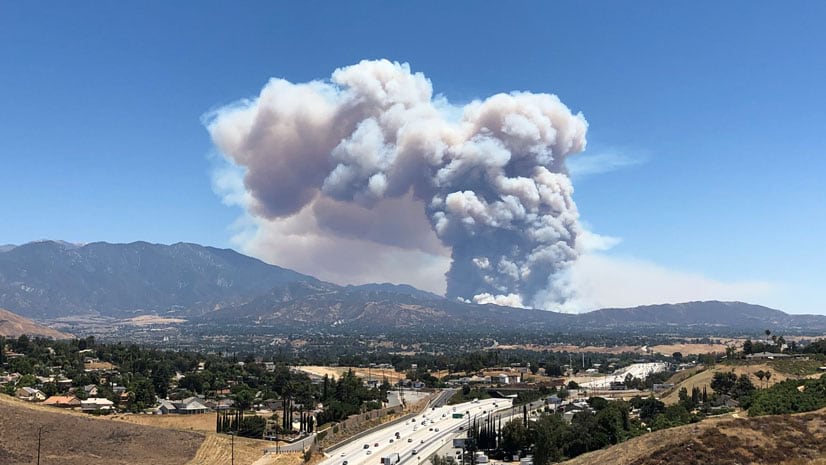
Make a fire map
ArcGIS Living Atlas of the World includes authoritative live feeds and other content that helps you learn more about fires and current status and conditions. Follow these steps to make your own fire map in a minute, maybe less.
Step 1 — Open Map Viewer, click Add, then Browse Living Atlas Layers.
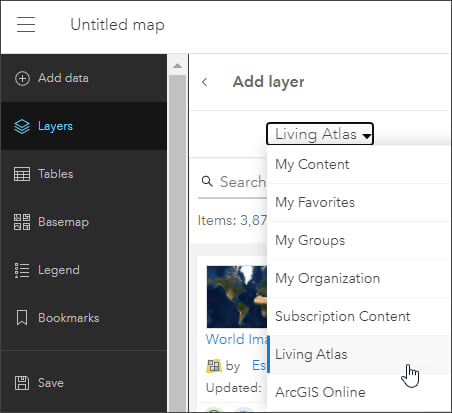
Step 2 — Enter “fire” in search to locate matching layers from Living Atlas. Scroll to find the USA Current Wildfires layer and click [+ Add] to add it to the map.
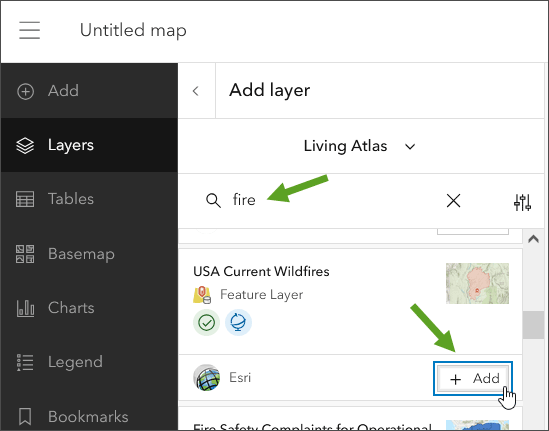
Tip: To learn more about any layer, click the layer card to view the item details pane.
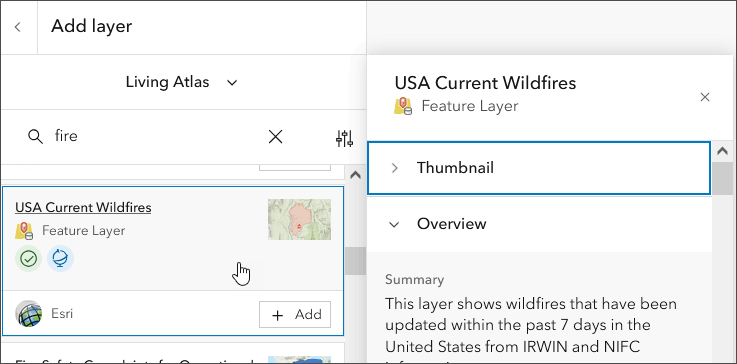
You can also scroll to the bottom of the item details pane to view the complete item details in full page form.

From the USA Current Wildfire item details we learn that wildfire points are sourced from Integrated Reporting of Wildland-Fire Information (IRWIN) and perimeters are sourced from the National Interagency Fire Center (NIFC). The layer is updated every 15 minutes.
Step 3 — Using the same “fire” search, locate Satellite (VIIRS) Thermal Hotspots and Fire Activity and click [+Add] to add it to the map.
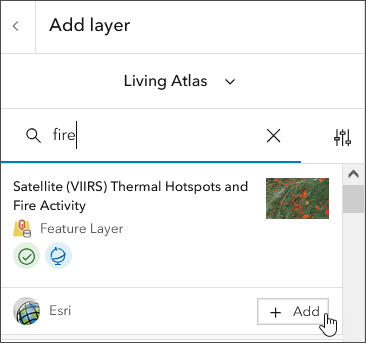
From the item details we learn that this layer represents the most frequently updated and most detailed global remotely sensed wildfire information. Using the VIIRS layer we can visualize and assess wildfires worldwide, including the fire of interest, the Apple Fire.
From the USA Current Wildfire item details we learn that wildfire points are sourced from Integrated Reporting of Wildland-Fire Information (IRWIN) and perimeters are sourced from the National Interagency Fire Center (NIFC). The layer is updated every 15 minutes.
The Apple Fire Map
In just a few clicks a map of the Apple Fire has been authored, showing the current fire perimeter along with VIIRS satellite hot spots.
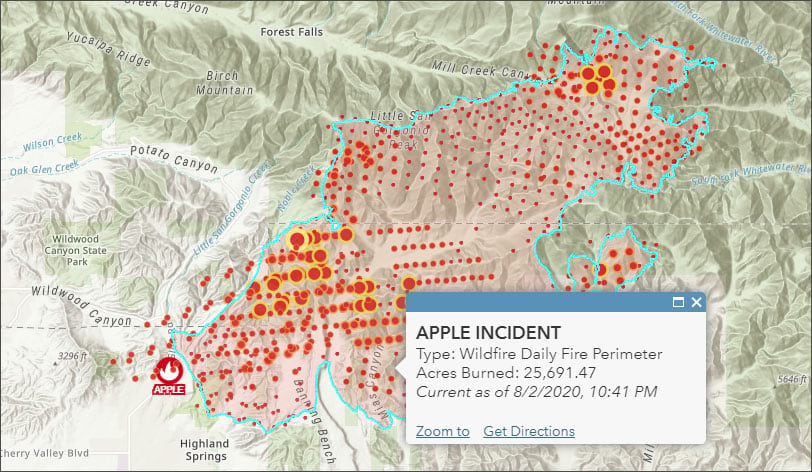
Other tools can be applied to the perimeter to learn more and additional Living Atlas content can be added to provide more context. Here are some examples.
Enrich the perimeter
Using the Enrich Layer analysis tool, population data was added to the perimeter. The configured results in the perimeter pop-up show that the area is sparsely populated. See Enrich layer for more information.
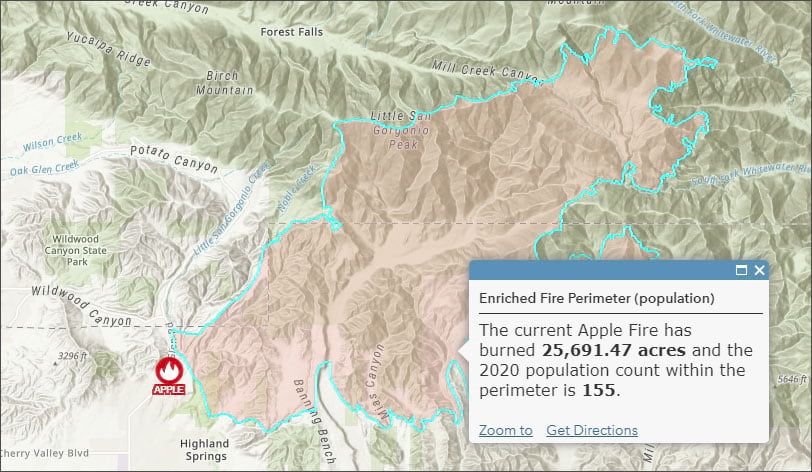
Historic fire boundaries
The map below shows the perimeter with Living Atlas historic fire perimeters dating back to 1878. See the California Fire Perimeters 1878-2018 item details for more information.
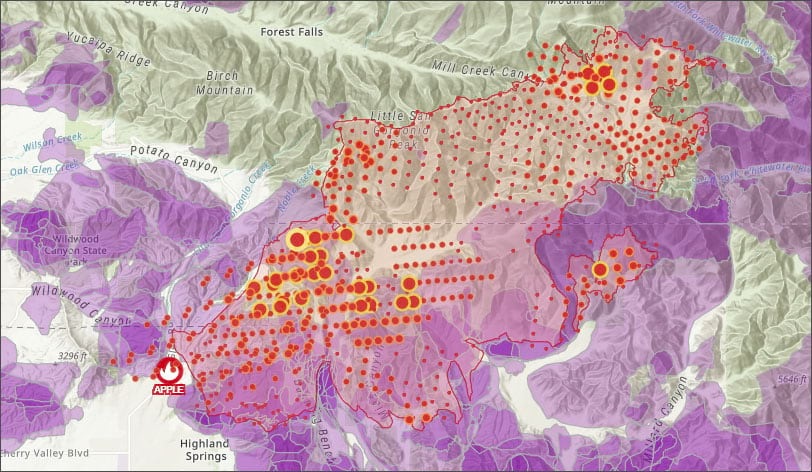
Slope
The influence of slope is a significant factor in fire behavior, severity, and containment. This map shows the perimeter overlying the Living Atlas Terrain: Slope in Degrees layer.
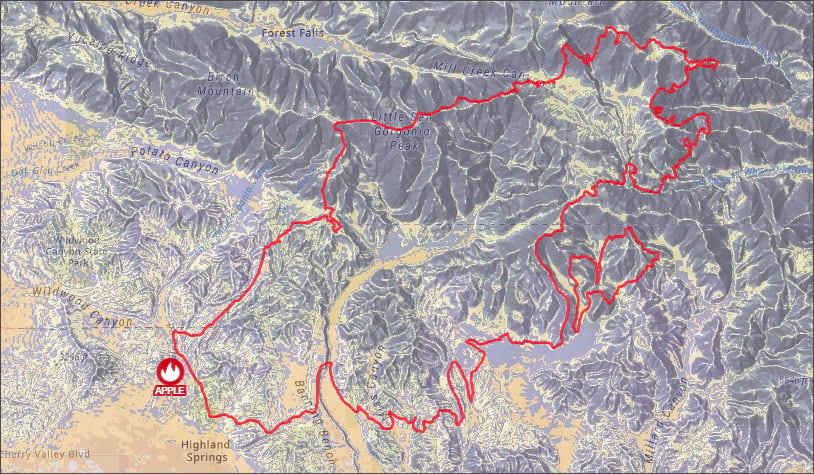
Explore other analysis tools and Living Atlas layers to learn more about fires, or any event.
More information
For more information, see the following:
- Use the analysis tools
- Enrich layer
- Living Atlas of the World website
- Living Atlas wildfire and fire content

Commenting is not enabled for this article.